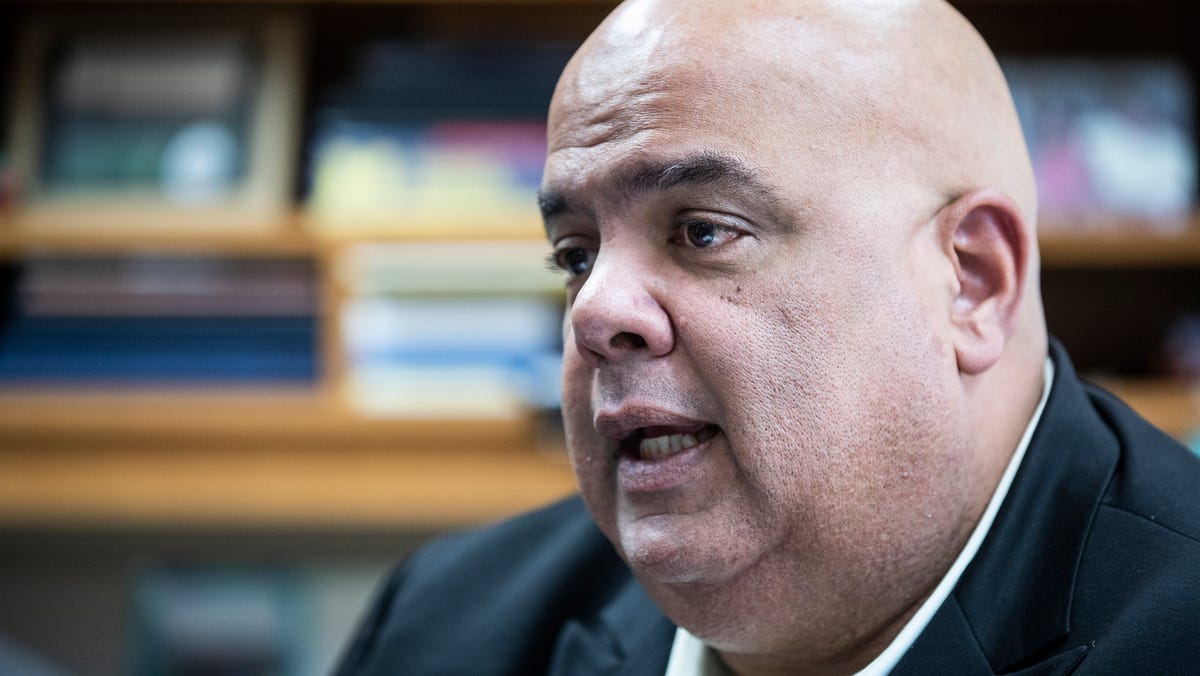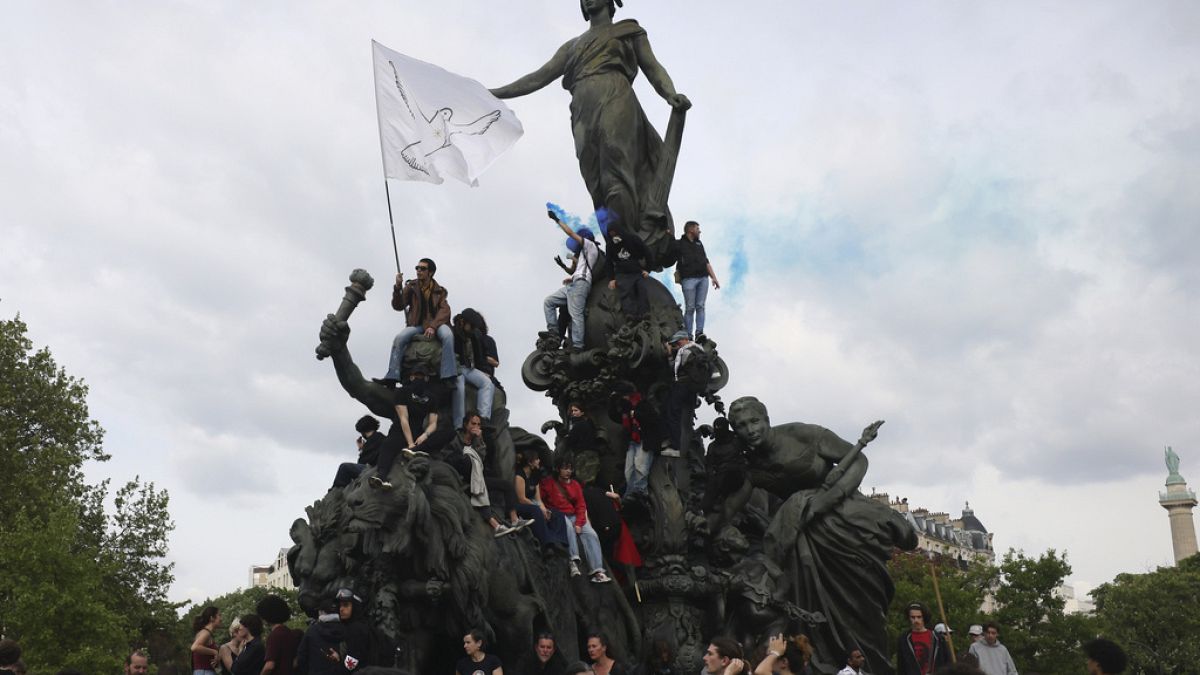World
Military attack leaves Myanmar’s displaced civilians with ‘no safe place’
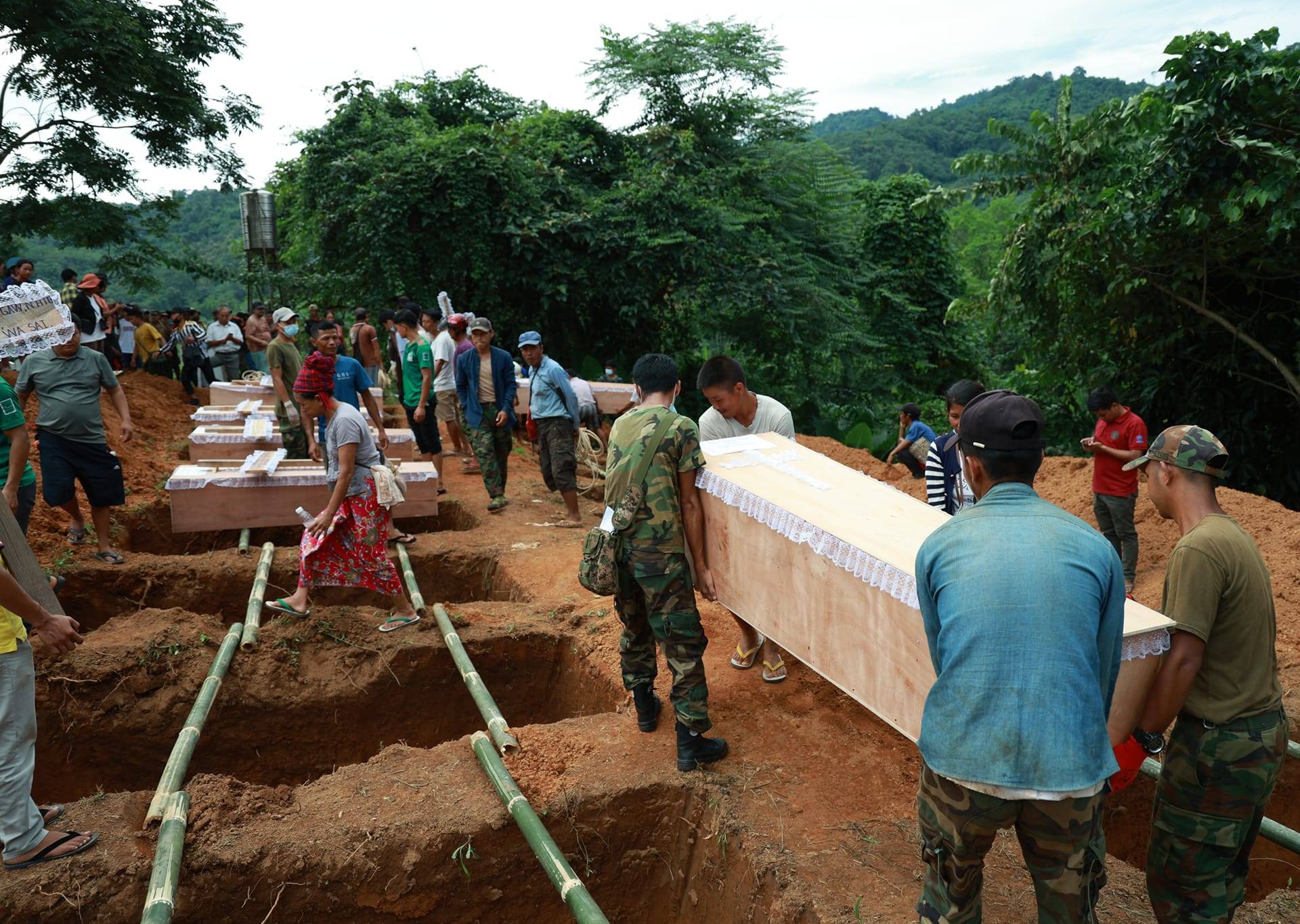
On the night of October 9, Seng Mai was awoken by a deafening explosion that tore apart her shelter in Mung Lai Hkyet, a camp for conflict-displaced people in northern Myanmar’s Kachin State.
“The sound was so loud that I wondered whether I had even survived,” the 21-year-old told Al Jazeera.
As rounds of mortar fire thundered from the direction of a nearby military post, she crawled into a makeshift trench.
“A grandmother was crying and shouting for help. My mother was running barefoot,” she said. “Children were also running in the dark, struggling to reach a safe place.”
By the time the bombardment was over, 28 civilians including 12 children had been killed and dozens of shelters as well as a kindergarten and church were destroyed. Rights groups have blamed the military, which seized power from the elected government of Aung San Suu Kyi in February 2021 and has so far denied responsibility for the attack.
It has an extensive record of targeting civilians and civilian areas, however, and its actions have only become “increasingly brazen” since the coup, according to a United Nations-appointed investigative mechanism. In August, the mechanism announced that it had found “compelling evidence” that the military had committed “more frequent and audacious war crimes and crimes against humanity”.
Bolstering this claim, a report published by the UN’s human rights office last month found that the military had killed at least 3,800 civilians, destroyed nearly 75,000 civilian properties and conducted nearly 1,000 air strikes in the more than two and a half years since the coup.
“Emboldened by confidence in impunity, military actions have grown in intensity and brutality,” said the report. “A seemingly endless spiral of military violence has engulfed all aspects of life in Myanmar.”
The recent attack on Mung Lai Hkyet targeted civilians displaced by war since 2011.
Several Kachin internally displaced youth, three of whom witnessed the Mung Lai Hkyet attack, told Al Jazeera the incident had left them traumatised and afraid. It also reinforced their sense that they had nowhere safe to run.
“I want to sleep at night but I can’t because I keep recalling the attack. I feel fearful and anxious about what might happen, while also recalling the terrible and tragic experiences that I’ve been through,” said Seng Mai, who has lived in Mung Lai Hkyet since 2011. “Since I became an IDP [internally displaced person], there have been many long and sleepless nights.”
Al Jazeera has given Seng Mai and others interviewed pseudonyms due to the risk of military retaliation.
‘No safe place’
Like many ethnic minorities in Myanmar, Kachin people were targets of the military’s human rights abuses long before the coup. The Kachin Independence Organisation (KIO), one of more than a dozen ethnic armed groups along the country’s borders, began its struggle for autonomy in 1961 and ever since, the military has attempted to cut its access to food, funds, intelligence and recruits in a strategy known as “four cuts.”
The approach, which specifically targets civilians, has only added fuel to the Kachin resistance, which entered a new phase with the collapse of a 17-year-long ceasefire in 2011. The fighting that followed displaced some 100,000 people, most of whom fled to camps. With the military criminalising affiliation with or support to the KIO under its Unlawful Associations Act, more than a third took refuge in KIO territory along Myanmar’s eastern border with China.
Htu Raw, who is using a pseudonym, recalled hearing the fighting break out from the state capital of Myitkyina, where she was boarding at the time to attend high school. Her family soon fled their village but she only found out two years later when she finished school and her mother came to pick her up.
“I noticed that the journey back wasn’t the same,” Htu Raw said. “I asked her where we were going, and she replied, ‘We have become IDPs now and we’re going back to the camp’.” Known as Woi Chyai, it is next to Mung Lai Hkyet and about 5km (3.1 miles) north of the KIO’s headquarters in Laiza.
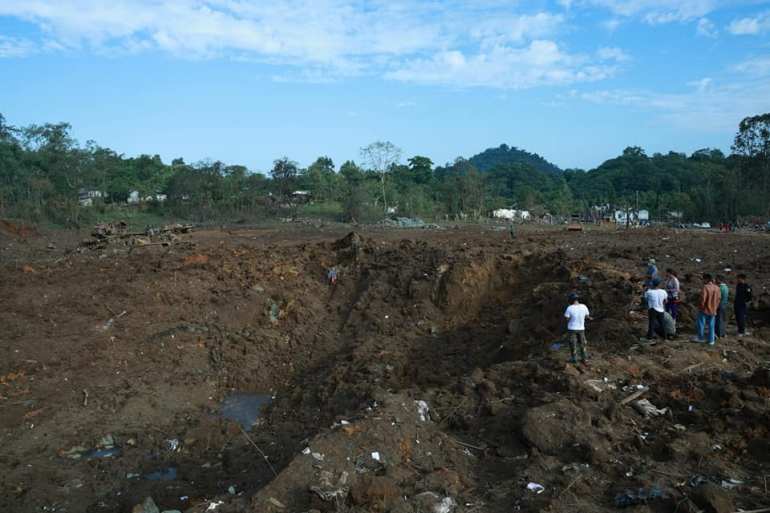
It was only a few years before fighting broke out again, prompting the camps’ residents to dig trenches where they could hide. “There were many times when we had to dig trenches and run into them when we heard the sound of planes,” said Htu Raw.
In 2019, the Aung San Suu Kyi-led civilian government began discussions with Kachin civil society about the return of displaced people to their villages as part of a broader effort to close IDP camps across the country. The initiative, however, was largely rejected by Kachin IDPs themselves due to the lack of a ceasefire between the KIO and the military, or any security guarantee for those who returned.
Still, many realised that the camps could provide them with little protection.
“Since the war resumed in 2011, the entire Laiza area hasn’t been a safe place for us to stay but we don’t have other safe places to go,” said Ah Hpung, a youth leader in Woi Chyai camp.
Traumatised people
After the coup, Kachin IDPs became even more vulnerable as security conditions deteriorated across the country. Within months, the military had killed hundreds of nonviolent protesters, provoking widespread armed resistance to its rule. The KIO has been active in providing training and weapons to newer resistance groups, while also clashing regularly with military forces.
In recent months, the fighting has increasingly neared Laiza, and although the residents of Mung Lai Hkyet had been on alert, the attack on October 9 came without warning. “Normally, we hear artillery shelling and jets flying, and we run and hide in the trenches for a moment, but in this case, we didn’t hear any planes,” said Seng Mai.
According to Ah Hpung, the attack has instilled a new level of fear among the displaced. “Since the war resumed, bombs have regularly fallen near us, but we felt we could hide in trenches during those times,” he said. “Now, those who were affected during the recent attack don’t dare to go back. We always feel unsafe in our homeland.”
He and others also described a community deeply traumatised by the incident. “Some children lost their mothers. They didn’t speak at all and just stared,” said Ah Hpung. “Some of the children who heard the sound of the bomb and witnessed the scale of the damage are losing their minds.”
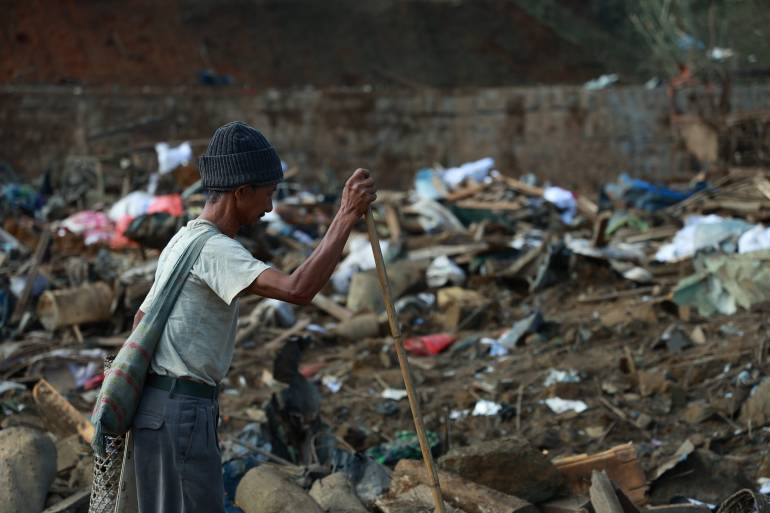
Htu Raw, who hid in a bunker in Woi Chyai camp during the attack and then rushed to help the wounded, has been unable to sleep. “When I hear the sound of a falling object, I immediately think it could be a bomb,” she said. “I’m even scared when darkness falls.”
Having lost their homes and belongings, those who survived are also likely to face significant financial hardships, exacerbating the difficulties they already faced due to the pandemic and coup. “There are many livelihood difficulties in every IDP family,” said Ah Ngwar Mee, whose nine family members survived the attack. “Because we stay in camps where we don’t own the land, it’s difficult even to garden.”
According to Htu Raw, who set aside her studies when she was 19 to work, many young people were already struggling just to attend school.“Many IDP youth want to continue their education. Some are very passionate about becoming educated but because their families are not able to support them, they have to let go of their dreams,” she said.
Ah Hpung fears that the Mung Lai Hkyet attack is likely to put students’ educational goals back even further. “Now, the youth feel hopeless and depressed about the future,” he said.
Hatred deepens
In addition to the hardships inflicted by the attack, it has only deepened the survivors’ hatred of the military. “This should be remembered as long as we live and we should pass it down to the next generation,” said Ah Hpung. “It shows the brutality of the Burmese [military] and that we should never ally or join with them.”
For many Kachin people, the attack also feeds into a sense of persecution that has only increased since the coup, especially after the military bombed a music concert near the jade mining town of Hpakant last October, leaving dozens of people dead. “They are intentionally killing our people and insulting us,” said Sut Seng Htoi, a prominent Kachin activist who was displaced in 2017. “They are trying to show that they can kill us anywhere.”
She told Al Jazeera that she would like to see Kachin people in Myanmar and around the world double down in their efforts to resist military rule and promote the development of strong and healthy Kachin institutions. “We, Kachin people, need to refocus on our unity and aspirations,” she said. “The feeling of loving our people is not enough; there must be action.”
In the week since the attack, Kachins and other Myanmar nationals around the world have worked to raise international awareness about the incident and advocate for a stronger response, including sanctions on aviation fuel which the military uses to bomb civilians. In Chiang Mai, Thailand, a group of activists held a theatrical re-enactment of the incident, and in Bangkok, a group of protesters stood in front of the United Nations office with signs calling on the organisation to “end its circle of failures in Myanmar”.
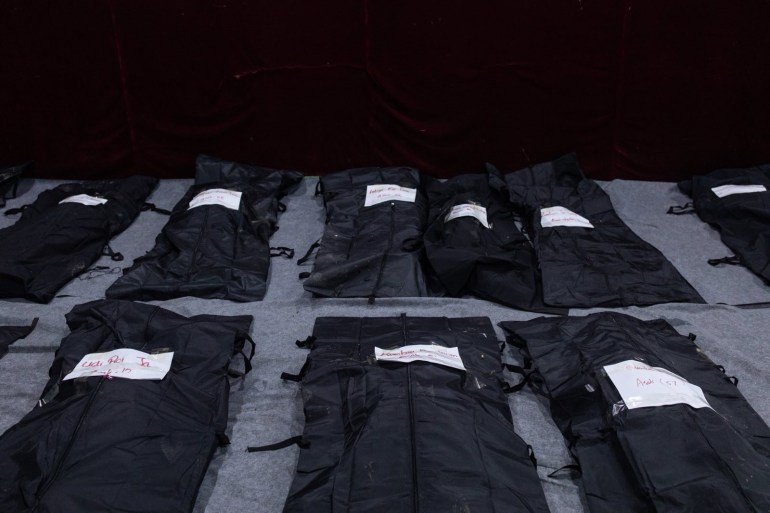
Others are raising funds, including a group of Kachin students and migrant workers in Tel Aviv, Israel who have pooled their money to send to the Mung Lai Hkyet survivors even as they hide in bunkers themselves.
Sarah Nu, a Kachin youth who has been living in Tel Aviv since 2018, said she would like to see Western countries and aid organisations offer Myanmar’s democracy movement and the Kachin struggle for self-determination the kind of attention and support that they have shown to Israel.
“Israel is already a developed nation and the United States and Western countries have supported it well. Regarding Kachin state and Kachin people, there isn’t much support,” she said. “There’s a huge difference when it comes to assisting the people.”
Back in the camp, Ah Hpung called on Kachins and others around the world to keep their attention on the crisis in Myanmar, including by promoting a better future for internally displaced youth. “Whenever there is war, we, the youth, have to suffer from it,” he said. “We need to support the youth who are supporting our people.”

World
Blinken says US cannot support Rafah assault without humanitarian plan

World
The unexpected announcement of a prime minister divides Haiti's newly created transitional council
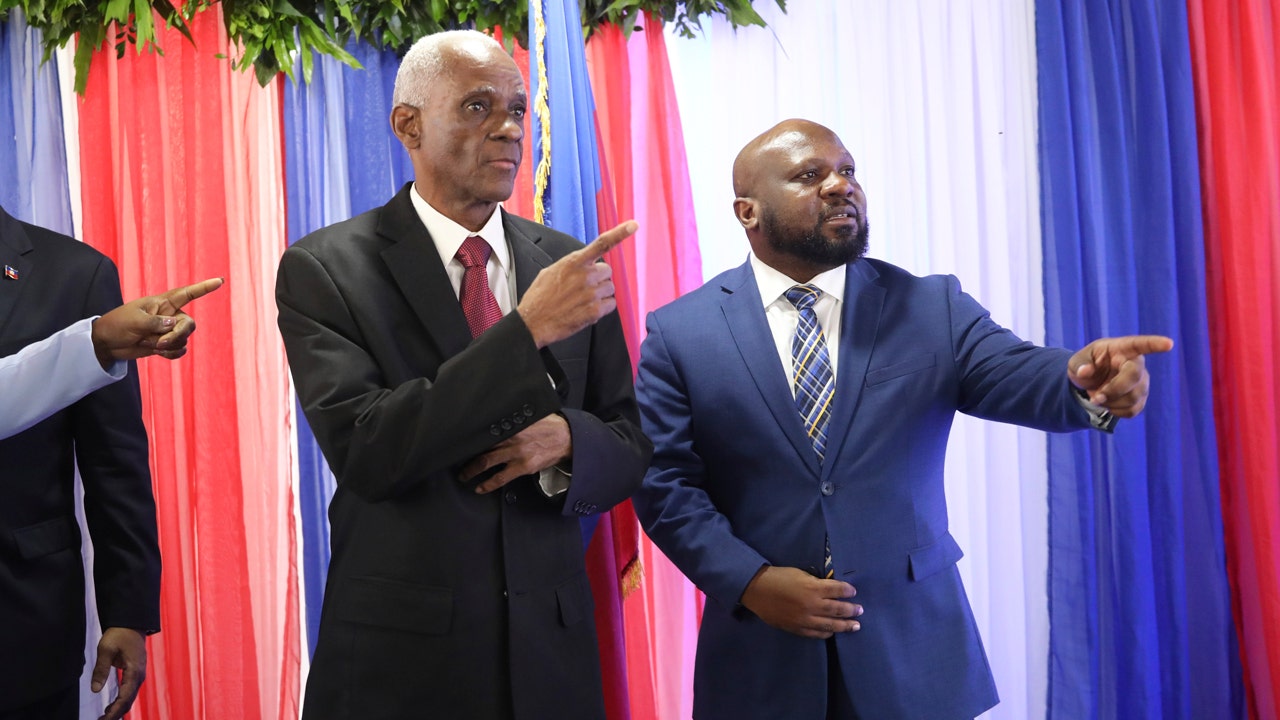
A surprise announcement that revealed Haiti’s new prime minister is threatening to fracture a recently installed transitional council tasked with choosing new leaders for the gang-riddled Caribbean country.
Four of seven council members with voting powers said Tuesday that they had chosen Fritz Bélizaire as prime minister, taking many Haitians aback with their declaration and unexpected political alliance.
HAITI COUNCIL APPOINTS NEW PRIME MINISTER AS COUNTRY CONTINUES TO FACE DEADLY GANG VIOLENCE
The council members who oppose Bélizaire, who served as Haiti’s sports minister during the second presidency of René Préval from 2006 to 2011, are now weighing options including fighting the decision or resigning from the council.
A person with direct knowledge of the situation who did not want to be identified because negotiations are ongoing said the council’s political accord had been violated by the unexpected move and that some council members are considering other choices as potential prime minister.
Edgard Leblanc Fils, left, and Smith Augustin prepare to pose for a group photo with the transitional council after it named Fils as its president in Port-au-Prince, Haiti, Tuesday, April 30, 2024. The transitional council will act as the country’s presidency until it can arrange presidential elections sometime before it disbands, which must be by February 2026. (AP Photo/Odelyn Joseph)
The council on Tuesday was scheduled to hold an election and choose its president. But two hours and a profuse apology later, one council member said that not only a council president had been chosen, but a prime minister as well. Murmurs rippled through the room.
The Montana Accord, a civil society group represented by a council member with voting powers, denounced in a statement late Tuesday what it called a “complot” hatched by four council members against the Haitian people “in the middle of the night.”
“The political and economic mafia forces have decided to take control of the presidential council and the government so that they can continue to control the state,” the Montana Accord said.
Haitian politics have long been characterized by secretive dealings, but many worry the country cannot afford further political instability as gangs lay siege to the capital of Port-au-Prince and beyond.
“People change parties (like) they’re changing their shirts,” said François Pierre-Louis, a professor of political science at Queens College in New York and former Haitian politician.
He spoke during an online webinar on Tuesday evening.
Like others, he said he believed that Jean-Charles Moïse, a powerful politician who was a former senator and presidential candidate, was behind Bélizaire’s nomination.
“Interestingly, Moïse, of all the politicians there, is the one calling the shots,” Pierre-Louis said.
Moïse, however, does not sit on the council. His party, Pitit Desalin, is represented by Emmanuel Vertilaire, who is among the four council members who support Bélizaire.
The others are Louis Gérald Gilles, Smith Augustin and Edgard Leblanc Fils, the council’s new president.
They could not be immediately reached for comment.
A document shared with The Associated Press and signed by the four council members who chose the new prime minister state they have agreed to make decisions by consensus. The document is titled, “Constitution of an Indissoluble Majority Bloc within the Presidential Council.”
The move prompted the Fanmi Lavalas party to issue a statement Wednesday calling it a “masquerade” and “conspiracy” to guarantee that PHTK “thugs and their allies retain power…and continue the tradition of corruption.”
“The Lavalas Family strongly rejects the betrayal scandal that occurred on April 30,” the party said.
Fils represents the January 30 political group, which is made up of parties including PHTK, whose members include former President Michel Martelly and slain President Jovenel Moïse. Meanwhile, Augustin represents the EDE/RED political party, founded by former Prime Minister Claude Joseph, and Gilles represents the Dec. 21 agreement, which is associated with former Prime Minister Ariel Henry, who recently resigned.
Henry was on an official visit to Kenya to push for the U.N.-backed deployment of a police force from the East African country when gangs in Haiti launched coordinated attacks starting Feb. 29.
They have burned police stations, opened fire on the main international airport that remains closed since early March and stormed Haiti’s two biggest prisons, releasing more than 4,000 inmates. The violence continues unabated in certain part of Port-au-Prince, including the area around the National Palace.
Haitians are demanding that security be a top priority for the council, which is tasked with selecting a new prime minister and Cabinet, as well as prepare for eventual general elections.
But some Haitians are wary of the council and the decisions it’s taking.
Jean Selcé, a 57-year-old electrician, noted that most of the council members are longtime politicians: “Their past is not really positive.”
“I hope their mentality can change, but I don’t believe it will,” he said. “They don’t really love the country. Who’s dying right now? It’s Haitians like me.”
Robert Fatton, a Haitian politics expert at the University of Virginia, noted that some of the parties represented on the council are responsible for the current chaos in Haiti.
“It’s a contradiction,” he said. “Every time we seem to be in a crisis, we reappoint the same people and hope that they change their ways, but they do not.”
Raising the same criticism is Michael Deibert, author of “Notes From the Last Testament: The Struggle for Haiti,” and “Haiti Will Not Perish: A Recent History.”
He noted in a recent essay that the council is “dominated by the same political currents who have spent the last 25 years driving Haiti over a cliff, taking advantage of impoverished young men in the slums to be used as political bludgeons before – bloated on the proceeds from kidnapping, extortion, drug trafficking and other criminal enterprises – these groups outgrew the necessity of their patrons.”
More than 2,500 people have been killed or injured across Haiti from January to March, according to the U.N.
In addition, more than 90,000 people have fled Port-au-Prince in just one month given the relentless gang violence.
World
Arizona Senate repeals near-total 1864 abortion ban in divisive vote

The repeal of abortion ban was passed 16 to 14 and is expected to be signed into law by Governor Katie Hobbs.
The Arizona Senate has voted to repeal the state’s 1864 ban on abortion, which would otherwise have taken effect within weeks.
The repeal was passed by the Senate in a 16-14 vote on Wednesday and is expected to be signed swiftly by Governor Katie Hobbs, a Democrat. Two Republican senators crossed party lines to vote in favour of repealing the ban.
The Arizona House last week passed the measure after a handful of Republicans broke party ranks and voted with Democrats to send it to the Senate.
“We’re here to repeal a bad law,” Senator Eva Burch, a Democrat, said from the floor. “I don’t want us honouring laws about women, written during a time when women were forbidden from voting.”
Republican Senator Wendy Rogers said in casting her vote to maintain the 1864 ban that repealing the law went against the conservative values of Arizona.
“Life starts at conception. They got it right in 1864. We need to continue to get it right in 2024,” Rogers said.
The fight over the Civil War-era abortion ban in Arizona, a state sharply split between Democrats and Republicans, is the latest flashpoint on women’s reproductive rights in the United States. In 2022, the country’s Supreme Court ended the constitutional right to abortion, leaving it up to states to decide the issue. Conservative-led states quickly invoked strict bans on the procedure within their borders.
Democrats across the US, confident that public opinion is on their side in supporting abortion rights, have sought to elevate the issue ahead of November’s presidential election. Arizona is a key battleground state.
Heather Williams, president of the Democratic Legislative Campaign Committee that works to elect Democrats to state legislatures, said her party would capitalise on the “extreme nature of MAGA Arizona Republicans” who voted to maintain the 1864 law as Democrats try to flip the state’s House and Senate in November’s elections.
Rogers, the Republican state senator, acknowledged the political risks.
“Some colleagues would say it’s politically pragmatic for us to find middle ground,” she said. “We might lose the legislature, we might lose the presidential election. But it’s more important to do what’s right.”
Near-total ban on abortions
The 1864 law was revived by a state Supreme Court ruling on April 9, and unless the legislature intervened, it would have taken effect within 60 days of that ruling, according to state Attorney General Kris Mayes, a Democrat.
If the repeal bill is signed, a 2022 statute banning the procedure after 15 weeks of pregnancy would become Arizona’s prevailing abortion law. Still, there would probably be a period when nearly all abortions would be outlawed because the repeal would not take effect until 90 days after the end of the legislative session, which is expected to be in June or July.
Planned Parenthood Arizona, a sexual health organisation in the state, announced it filed a motion on Wednesday afternoon asking the state Supreme Court to prevent a pause in abortion services until the repeal takes effect.
The near-total ban on abortions predates Arizona becoming a state.
Under the 1864 law, “every person” who participates in conducting an abortion can be held criminally liable and face a minimum sentence of two years in prison.
There are no exceptions for cases of rape or incest, although there is an exception when the pregnancy puts a woman’s life at risk.
-

 Education1 week ago
Education1 week agoVideo: Dozens of Yale Students Arrested as Campus Protests Spread
-

 News1 week ago
News1 week agoLarry Webb’s deathbed confession solves 2000 cold case murder of Susan and Natasha Carter, 10, whose remains were found hours after he died
-

 World7 days ago
World7 days agoHaiti Prime Minister Ariel Henry resigns, transitional council takes power
-

 Politics1 week ago
Politics1 week agoFetterman hammers 'a–hole' anti-Israel protesters, slams own party for response to Iranian attack: 'Crazy'
-

 World1 week ago
World1 week agoPeriod poverty still a problem within the EU despite tax breaks
-

 World1 week ago
World1 week agoUS secretly sent long-range ATACMS weapons to Ukraine
-

 News7 days ago
News7 days agoFirst cargo ship passes through new channel since Baltimore bridge collapse
-

 World1 week ago
World1 week agoTurkey’s Erdogan meets Iraq PM for talks on water, security and trade


